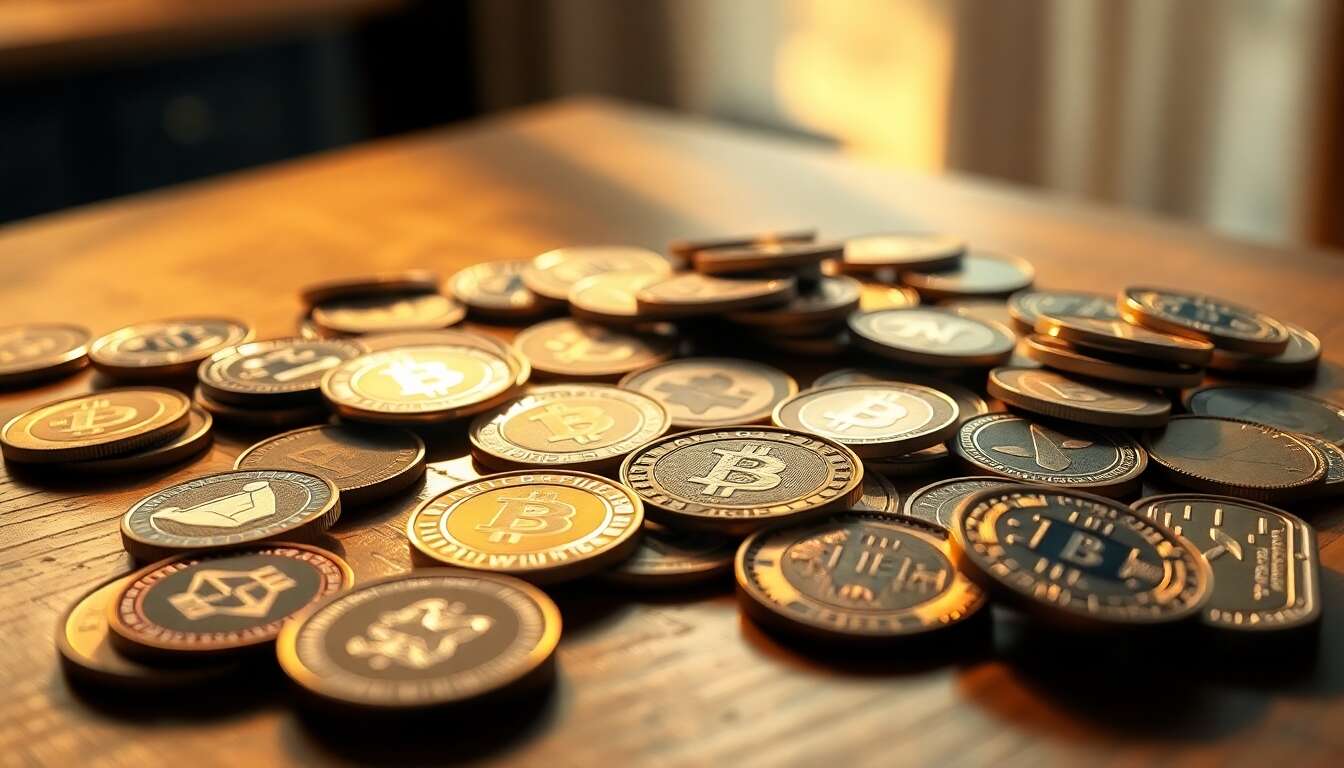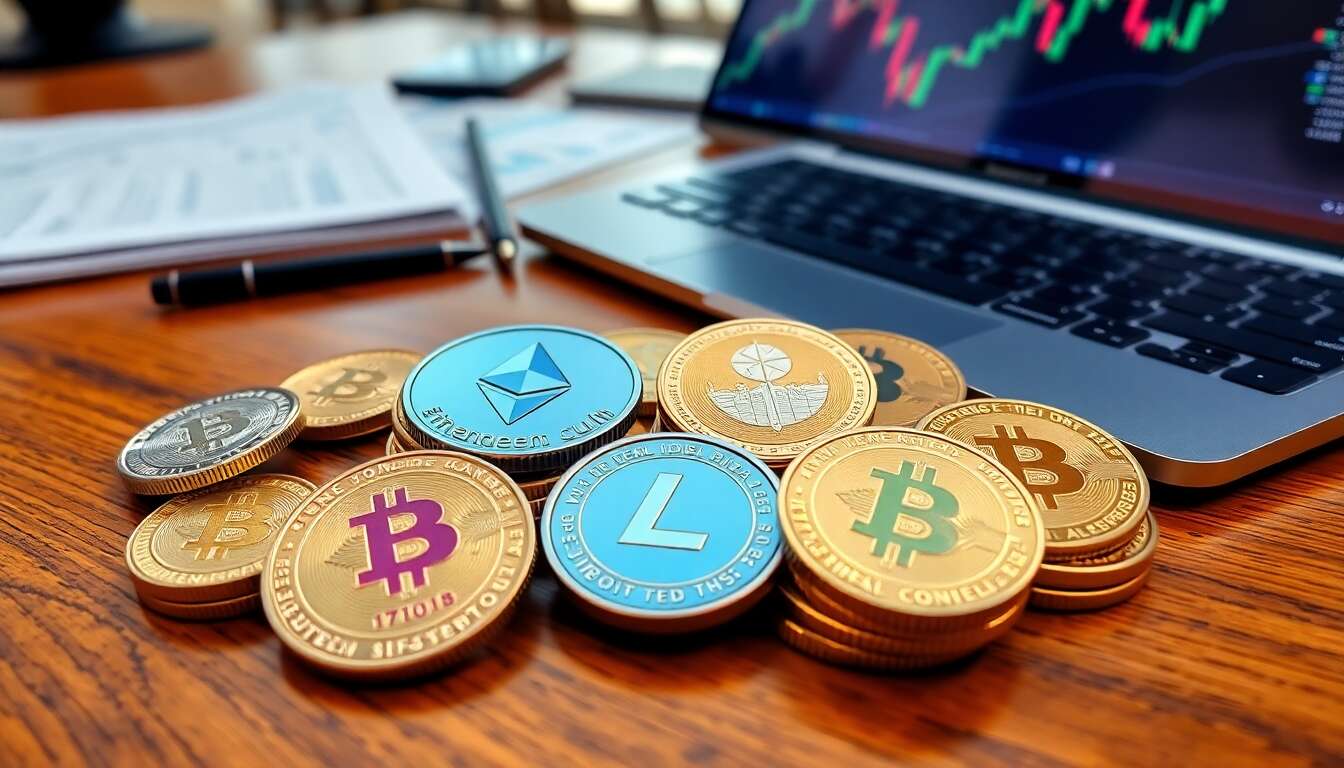In the rapidly evolving world of digital finance, altcoins have carved out a significant niche. As alternatives to Bitcoin, these cryptocurrencies have introduced a plethora of functionalities and innovations that have expanded the horizons of the blockchain ecosystem. From their inception, altcoins have been at the forefront of technological advancements and investment opportunities. As we delve deeper, it becomes evident that understanding altcoins is crucial to grasping the broader cryptocurrency landscape.
Understanding Altcoins in the Cryptocurrency Ecosystem
Defining Altcoins
Altcoins, short for « alternative coins, » refer to any cryptocurrency that is not Bitcoin. They are designed to improve upon the perceived limitations of Bitcoin by offering a variety of new features and functionalities. Altcoins are built on blockchain technology and serve various purposes, from facilitating transactions to enabling smart contracts and decentralized applications.
The Role of Altcoins
Altcoins play an essential role in the cryptocurrency ecosystem by promoting diversity and innovation. They offer unique solutions to specific challenges and provide options for users and investors looking for alternatives to Bitcoin. By fostering competition, altcoins drive technological advancements and contribute to the overall growth of the cryptocurrency market.
Altcoins are instrumental in diversifying the financial landscape, offering varied functionalities that enhance user experience and broaden market appeal. This diversity leads us to explore the differences between altcoins and Bitcoin.
Differentiating Altcoins and Bitcoin: an Analysis
Key Differences
While Bitcoin remains the most well-known cryptocurrency, altcoins differentiate themselves in several ways:
- Purpose: Bitcoin was created primarily as a digital currency, while altcoins often have additional functionalities, such as smart contracts or privacy features.
- Consensus Mechanisms: Many altcoins use different consensus mechanisms, such as proof of stake or delegated proof of stake, which can offer advantages in terms of speed and energy efficiency.
- Transaction Speed: Altcoins like Litecoin and Ripple are designed to process transactions faster than Bitcoin.
Comparative Analysis
The following table highlights some differences between Bitcoin and select altcoins:
| Cryptocurrency | Consensus Mechanism | Average Transaction Time | Max Supply |
|---|---|---|---|
| Bitcoin | Proof of Work | 10 minutes | 21 million |
| Litecoin | Proof of Work | 2.5 minutes | 84 million |
| Ethereum | Proof of Stake (as of Ethereum 2.0) | 15 seconds | Unlimited |
Understanding these differences provides insight into why investors might choose altcoins over Bitcoin. As we move forward, it’s important to note the diverse types of altcoins available.
Types of Altcoins: overview of Available Options
Classification of Altcoins
Altcoins can be classified into several categories based on their functions and underlying technology:
- Stablecoins: Designed to reduce volatility by pegging their value to a stable asset, like the US dollar.
- Utility Tokens: Used to access specific services or applications within a blockchain network.
- Security Tokens: Represent ownership in an asset and are subject to regulatory standards.
- Payment Tokens: Primarily used as digital currency for transactions.
Examples of Popular Altcoins
Some well-known altcoins include:
- Ethereum (ETH): Known for its smart contract capabilities and decentralized applications.
- Ripple (XRP): Focuses on facilitating cross-border payments for financial institutions.
- Tether (USDT): A stablecoin widely used for trading and transactions due to its price stability.
Having explored the types and examples of altcoins, the next step is to examine their role in driving blockchain innovation.
Altcoins and Blockchain Technology: drivers of Innovation

Innovative Contributions
Altcoins have been pivotal in pushing the boundaries of blockchain technology. They have introduced innovations such as:
- Smart Contracts: Ethereum’s smart contract platform has revolutionized how agreements are executed, eliminating the need for intermediaries.
- Decentralized Finance (DeFi): Altcoins have enabled the growth of DeFi, allowing users to engage in financial activities without traditional banks.
- Privacy Features: Altcoins like Monero and Zcash offer enhanced privacy, providing users with greater anonymity in transactions.
The Impact on Blockchain Development
Altcoins have not only expanded the functionality of blockchain technology but have also fostered a competitive environment that encourages continuous development and improvement. This innovation is crucial as we address the challenges and risks associated with altcoin investments.
Challenges and Risks in Altcoin Investments

Volatility and Market Risks
Investing in altcoins comes with inherent risks, including:
- Market Volatility: Altcoins often experience price fluctuations more severe than Bitcoin.
- Regulatory Challenges: The regulatory environment for altcoins is still evolving, leading to uncertainty.
- Security Risks: Some altcoins have been subject to hacking and fraud, highlighting the importance of securing digital assets.
Strategies for Mitigating Risks
To navigate these risks, investors can adopt strategies such as:
- Diversifying Portfolios: Spread investments across multiple altcoins to reduce exposure to any single asset.
- Conducting Thorough Research: Understanding the fundamentals and potential of each altcoin before investing.
- Staying Informed: Keeping up with regulatory changes and market trends to make informed decisions.
With these challenges in mind, it’s essential to consider the current trends and future prospects of altcoins.
Current Trends and the Future of Altcoins

Emerging Trends
Recent trends in the altcoin market include:
- Integration with DeFi and NFTs: Altcoins are increasingly used in DeFi platforms and NFT marketplaces, expanding their applications.
- Focus on Sustainability: As environmental concerns grow, altcoins using eco-friendly consensus mechanisms gain attention.
- Adoption by Institutions: More financial institutions are exploring altcoins for their potential in providing innovative financial solutions.
Future Outlook
The future of altcoins looks promising as they continue to drive innovation and attract interest from various sectors. As technology evolves and regulatory frameworks solidify, altcoins are poised to play a significant role in the digital economy.
The journey of altcoins from their inception to their current role in the cryptocurrency ecosystem highlights their importance and potential. From offering diverse functionalities to driving blockchain innovation, altcoins have significantly shaped the digital currency landscape. As they continue to evolve, it is clear that altcoins will remain a vital component of the financial ecosystem, offering new opportunities and challenges for investors and developers alike.



